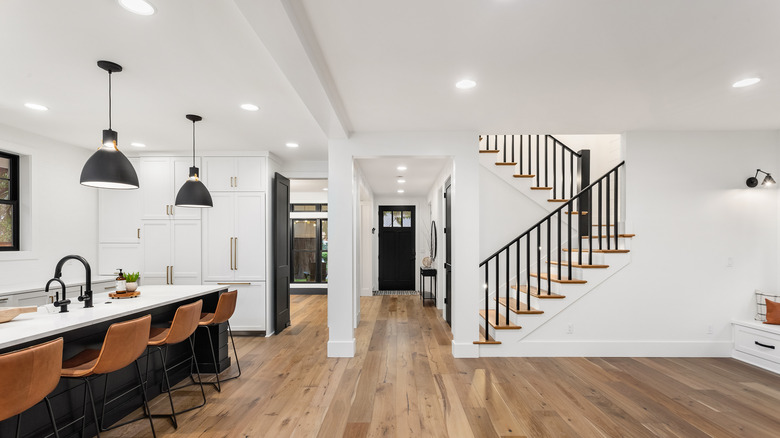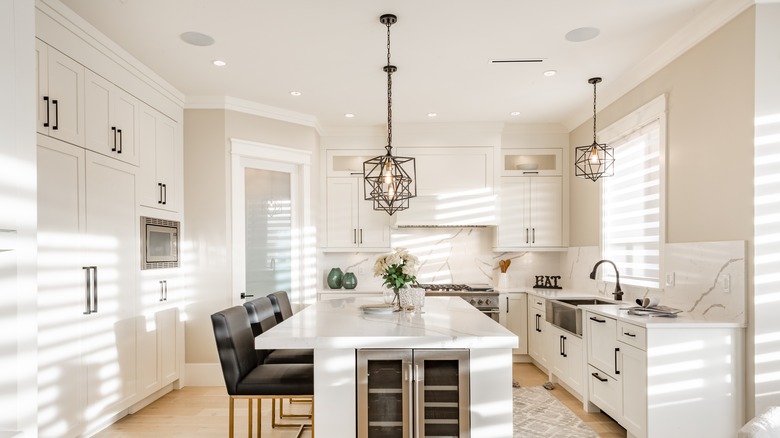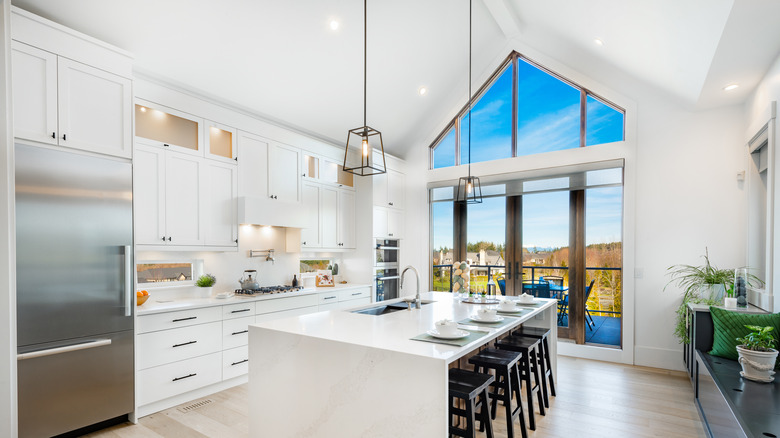Here's Why Lighting Is So Important In A Open-Plan Kitchen
Owning a home with an open-floor plan is a fun way to expand your space. Having areas that blend into one another will allow for more access to guests, as well as friends and family when spending time together. One of the most important factors to consider for your open-plan kitchen is the lighting. Lighting can make or break a room, and can be the difference between a warm and welcoming area versus an awkward one.
There will usually be multiple needs within your kitchen for different lighting. Some portions might require brighter, more functional ambiance, while other areas might do well with lower illumination to set the mood for socializing. During the day, natural lighting from the open-plan will filter in, which is a huge benefit of the layout, according to London Bay. However, once night falls, you'll need a design to keep each section properly visible for the purpose it serves. This is why lighting is so important, but it goes deeper than just basic illumination needs.
Why lighting is important for a kitchen
Your kitchen is one of the busiest rooms in your house, which makes the need for good lighting a top priority. Open-plan kitchens can be tricky to light, because there's so much space and the wrong type of light can create obstacles. Depending on if your ceiling is high or low, you'll need to come up with a scheme that lets each light fixture properly shine on the designated area. The main goal is to unify the entire room and the surrounding spaces. When picking ambient light versus decorative, make sure to look beyond the main focus, which in this case is the kitchen.
Think about how the dining room, living rooms, and other social spaces will be affected by the lights, too. This'll help you predict where more decorative fixtures can go as opposed to big overhead options. If your kitchen features an island, this is somewhere that can benefit from decorative lights that hang down a little lower. These usually create a warm, inviting ambiance, which is great for both socializing and setting up food, snacks, or drinks. Mindy Gayer recommends keeping your collection to three or four decorative additions, as overdoing these can make a space feel cluttered or chaotic.
Add layered lighting
The other kinds of lighting you'll want to include in your kitchen are task and accent options. Color Cord Company notes that layered lighting is imperative to a welcoming and functional place, which is why you'll want to combine decorative pendants, accent illumination, and task sections. The latter refers to a particularly bright fixture that can assist with everything from chopping ingredients to dishing up a meal. Your kitchen will need task lighting in areas where lots of prep takes place, as well as cleaning sections.
Accent lighting can help accentuate certain focal spaces, and help brighten corners and build an atmosphere. Ambient light will ensure the entire kitchen is illuminated, but accent fixtures help add depth and dimension. These "layers" all work together to make an open-plan space feel accessible and inviting, rather than dark or awkward. Lighting is your best friend when it comes to any kind of open area in the home, so don't take it for granted when you begin to build or renovate.


